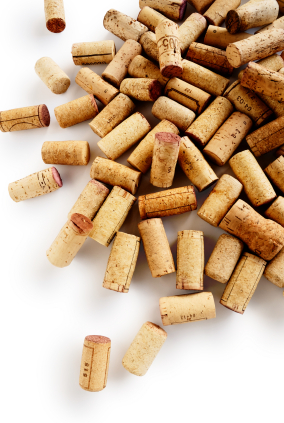
Natural
Natural corks are produced by punching from a single piece of cork. They have little pores and cracks, and therefore are used for the finest wines of the time archiving for decades. Great extent contributes to the success of the aging process of wine for which there is to obtain the characteristic bouquet of the cylinder, smooth tannins and the overall complexity of the acquisition of wine. Natural corks are produced in the categories of flor, and super extra, where Flor corks are of the highest quality.

Colmated
It is a natural corks, but where the pores are filled with artificial cork dust. The filling is made for more uniform appearance and plugs for improved mechanical properties. For the fixation of the cork dust in the pores of the used resin-based adhesives, natural rubber and most recently based water. It is obvious suitability for contact with food.

Microaglomerated
This type of plugs are used for wines intended for immediate consumption, but no longer than 12 months. These plugs are completely homogeneous and are made from granulated cork, which is produced as waste in the production of natural cork. Production of these plugs is performed in two ways, either by pressing (molding) of plugs, or extrusion of granules (extruded) and its subsequent division into individual pieces. The concentration of granules are used binders approved for use in products that come into contact with food.

Technical (1+1)
This type of plugs are used for wines with a power usually within 3-4 years. The body consists of agglomerated corks or cork microaglomerated which are glued to the discs from one piece natural cork. In this type of cork not a contact adhesive with wine because it is only a cork disc. The adhesive is subject to strict products that come into contact with food. This type of plugs is very stable both mechanically and chemically resistant.
Corks are divided into 4 classes - A, B, C, D. This division is according to the quality corks. This indicates that the plug bearing as a 1+1 D is stopped with the lowest quality.

Champagne
Champagne corks have a larger diameter than regular plugs because they must withstand high pressure in the bottle. They are designed for the type of wine champagne, sparkling wines, aerated and apple wine. The body consists of agglomerated cork stoppers at one end of the stick cork discs and cork or the cork from the cork microaglomerated without disks. Must be made with great care because they are subject to strict quality control and are imposed upon them the highest demands.
